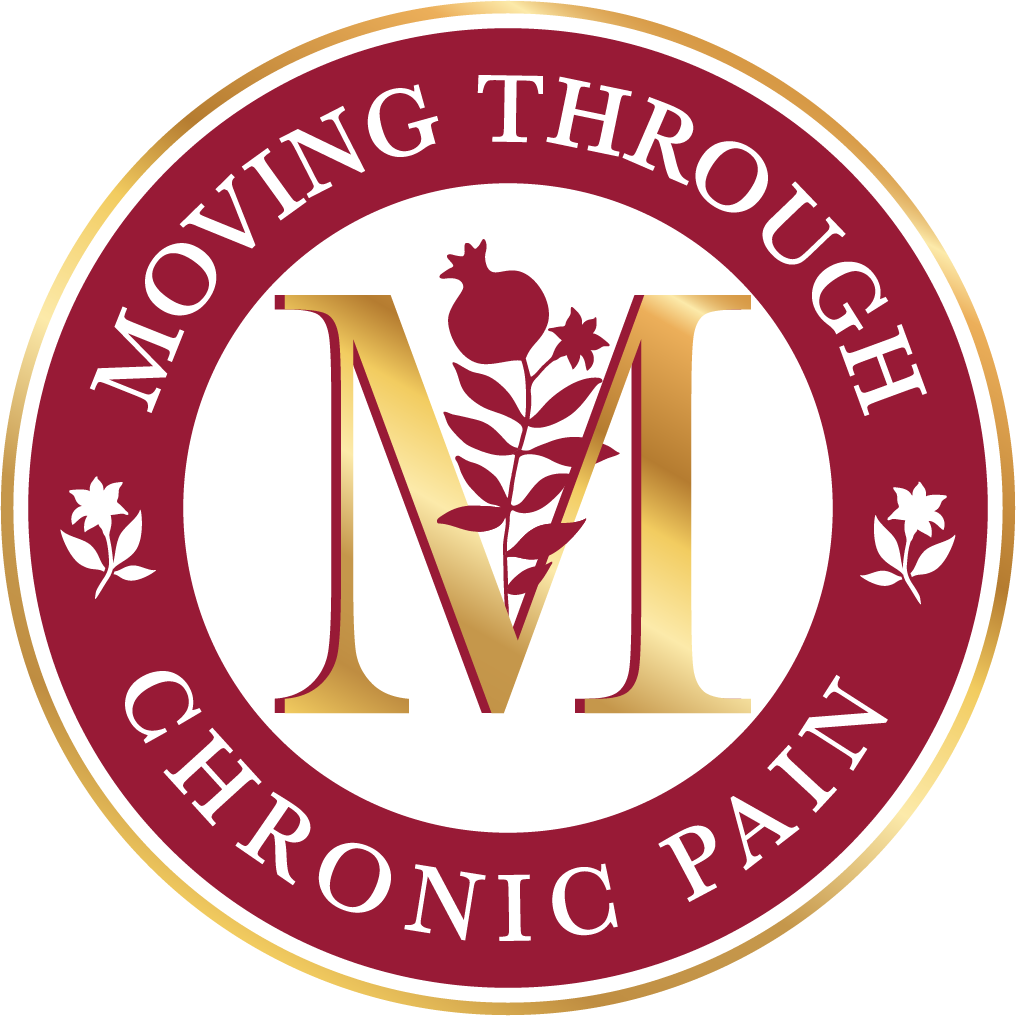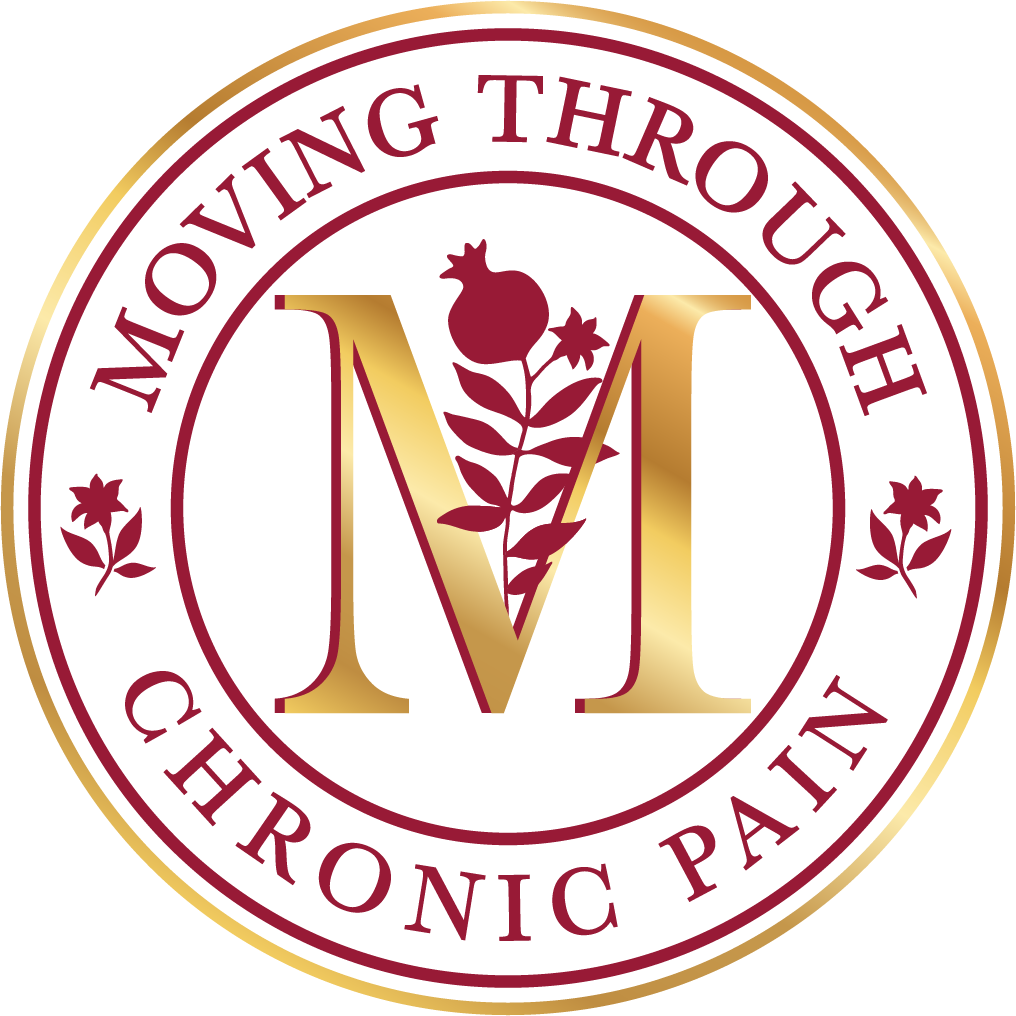HELPING MAKE YOUR CHRONIC PAIN JOURNEY EASIER
The pain cHronic•les
LATEST BLOG ARTICLES

Chronic pain is a complex and often misunderstood condition that affects millions of people around the world. It's important to note that every individual's experience with chronic pain can be unique, and what works for one person may not necessarily work for another. I’ll will be providing some insights into the causes, mechanisms, and challenges of chronic pain based on my personal experience in the hopes that it will help make your chronic pain journey easier.

Michelle Marikos, Founder & CEO
Moving Through Chronic Pain

Medication Stat
HELPING MAKE YOUR CHRONIC PAIN JOURNEY EASIER
BEHIND THE STATS
Why do patients stray from taking their meds?


My personal experience with non-adherence
We are surrounded by statistics – we hear them in the news, they pop up on our social media feeds, we are spoon-fed them in school and college, helping us understand the depth and extent of subject matter. They are hard to escape! Statistics stir emotional responses – some more intensely than others. Take chronic pain, for example. I have shared this one many times : over one-quarter of people in the United States live with chronic pain – a powerful one to highlight how widespread this issue is. I often quote how the country spends over $100 billion annually on healthcare expenses related to pain management and opioid use disorders – to emphasize the financial burden this places on society.
However, there is one statistic that strikes a much deeper chord with me – it’s this one: Only 50% of chronic pain patients adhere to their prescribed medication regimens.
Unlike the first two, which focus on numbers and costs, this resonated with my own personal struggle (and the struggle that many patients face, as half are unable or unwilling to follow treatments that could alleviate their pain); it’s a reminder of the profound emotional and psychological toll that comes with chronic pain. It’s not just a societal problem; it’s a personal battle for millions of us, too.
To share or not to share …
When I first came across the statistic that only 50% of chronic pain patients adhere to their prescribed medication regimens, I wasn't sure how to approach it. Part of me wanted to gloss over it, move on, and avoid confronting the weight it carried. But the truth is, when I first read it, I had a visceral reaction – a knot formed in the pit of my stomach. It hit me in a way the other numbers didn’t, and I couldn't shake it off. I realized this statistic wasn’t just about numbers or percentages; it spoke to a deeper human experience, one of frustration, helplessness, and exhaustion.
I need to open up about this because, for many of us, living with chronic pain is an invisible struggle. And this statistic is a reminder of the emotional toll it can take, not just on those of us living with pain, but on those who read about it, care about it, and perhaps have experienced it first-hand. Sharing this reaction, this moment of hesitation, feels important. It’s part of acknowledging the real, messy human stories behind the data, and the importance of empathy when confronting them. As a peer support specialist, part of my role is to share my reality; if I don’t talk about this kind of issue, we can’t bring about change.
So here goes! Let me tell you a story.
My journey into non-adherence
There was a time when I didn’t fully adhere to my medication regimen. I was juggling so much pain and so many prescriptions that it felt overwhelming. There were days I missed doses, took less than prescribed, or, honestly, just didn’t care about following the instructions perfectly. And there were days that I took more than prescribed just to get through especially difficult moments.
There were times when I convinced myself the medication wasn’t helping, and in a moment of misguided empathy, I even ‘diverted’ some of my prescription to a family member who was also dealing with chronic pain. At the time, it seemed harmless, maybe even generous. I wasn't aware of the implications of what I was doing – how it could affect not only my health but theirs as well. I didn’t realize how this small act played into a much larger, more dangerous pattern.
Why didn’t I adhere?
It wasn’t because I didn’t want relief – it was because I was mentally and emotionally drained from the constant cycle of hoping for relief and then being let down. I see this happen with so many others. We’re human, and chronic pain wears on you in ways that are hard to explain to someone who hasn’t lived it.
Looking back now, I understand how easy it is to slip into non-adherence when you're worn down, physically and emotionally. It’s not just about forgetting to take a pill; it's about the exhaustion of facing the same pain, day after day, and the belief that maybe this regimen isn't going to make a difference anyway. In my case, it also came from a place of wanting to help someone else, but I now realize how misguided that was.
Just like it was for me, most non-adherence is intentional with patients making a rational decision not to take their medicine based on their knowledge, experience and beliefs.
Common reasons for intentional and Nonintentianal non-adherence include:
Fear – patients may be frightened of potential side effects. They may have also experienced previous side effects with the same or similar medicine. They may have witnessed side effects experienced by a friend or family member who was taking the same or similar medication. Seeing those side effects experienced by someone else, may have led them to believe the medication caused those problems.
Misunderstanding – non-adherence can also happen when a patient does not understand the need for the medicine, the nature of side effects or the time it takes to see results. This is especially true for patients with chronic pain – taking medication every day to reduce the risk of something bad happening can be confusing.
Too many medications – I know all about this! I can see how juggling several different medicines prescribed with higher dosing frequency increases chances of non-adherence. Managing multiple prescriptions can feel like a full-time job, and the routine of taking pill after pill became mentally exhausting for me. Speaking from experience, having your provider simplify your dosing schedule by adjusting medicines so they can be taken at the same time of day makes a big difference.
Lack of symptoms – when you don’t feel any different when you start or stop your medicine, you might see no reason to take it. I did this. A lack of visible symptoms can make it hard to stay committed. Chronic pain isn’t always constant or predictable, so when a ‘good day’ comes along, it’s tempting to skip a dose, believing maybe the worst has passed. I was also overwhelmed; I couldn’t tell which medication was doing what, so I figured it was OK to not stick to the dosage. When you do notice an improvement, you can start to feel as though you have your condition under control, that the problem has been resolved and it’s fine to discontinue using the medication. Not knowing that skipping a dose would start the withdrawal process and that my pain would get even worse. As the saying goes “You don't know, what you don't know”
Worry – this was a big issue for me; there in the back of my mind, the constant concern that would become dependent on my medicine. This is a common cause of nonadherence, which is why there is a vital need for clear, comprehensive patient-physician communication. Inadequate communication can account for 55% of medication non-adherence – another sobering statistic!
Depression – patients who are depressed are less likely to take their medications as prescribed. Physicians and other health professionals may be able to uncover this by sharing issues and asking if the patient can relate to it.
All of these factors create a perfect storm that makes adherence difficult. I know now that I wasn’t alone in feeling this way, and these reasons, whether it’s fear, worry, the rollercoaster of symptoms, or simply too many medications, are what so many others are grappling with as well. And that’s why I am talking about it.
I’ve learned that part of healing is acknowledging the struggle and working through it with the right support, both from professionals and from our communities. Medication adherence isn’t just about following instructions; it’s about having the emotional and mental capacity to do so, and sometimes, we make choices in desperation that we later regret or didn’t fully understand at the time.
Let’s start the hard conversations about what’s really going on behind these stats. Let’s share our realities and support each other on this difficult journey.
#chronicpain #understandingpain #painawareness #peersforpain #invisibleillness #mindfulness #stigma #vema #validate #educate #motivate #activate
Michelle Marikos’ fall from a balcony in her early twenties, and her subsequent decades long debilitating chronic pain, inspired her to launch Moving Through Chronic Pain and her PEER™ Method programs to facilitate deeper connections between those living with chronic pain and their community of providers, employers, and family members.

Michelle Marikos, Founder & CEO
Moving Through Chronic Pain

Medication Stat
HELPING MAKE YOUR CHRONIC PAIN JOURNEY EASIER
BEHIND THE STATS
Why do patients stray from taking their meds?


My personal experience with non-adherence
We are surrounded by statistics – we hear them in the news, they pop up on our social media feeds, we are spoon-fed them in school and college, helping us understand the depth and extent of subject matter. They are hard to escape! Statistics stir emotional responses – some more intensely than others. Take chronic pain, for example. I have shared this one many times : over one-quarter of people in the United States live with chronic pain – a powerful one to highlight how widespread this issue is. I often quote how the country spends over $100 billion annually on healthcare expenses related to pain management and opioid use disorders – to emphasize the financial burden this places on society.
However, there is one statistic that strikes a much deeper chord with me – it’s this one: Only 50% of chronic pain patients adhere to their prescribed medication regimens.
Unlike the first two, which focus on numbers and costs, this resonated with my own personal struggle (and the struggle that many patients face, as half are unable or unwilling to follow treatments that could alleviate their pain); it’s a reminder of the profound emotional and psychological toll that comes with chronic pain. It’s not just a societal problem; it’s a personal battle for millions of us, too.
To share or not to share …
When I first came across the statistic that only 50% of chronic pain patients adhere to their prescribed medication regimens, I wasn't sure how to approach it. Part of me wanted to gloss over it, move on, and avoid confronting the weight it carried. But the truth is, when I first read it, I had a visceral reaction – a knot formed in the pit of my stomach. It hit me in a way the other numbers didn’t, and I couldn't shake it off. I realized this statistic wasn’t just about numbers or percentages; it spoke to a deeper human experience, one of frustration, helplessness, and exhaustion.
I need to open up about this because, for many of us, living with chronic pain is an invisible struggle. And this statistic is a reminder of the emotional toll it can take, not just on those of us living with pain, but on those who read about it, care about it, and perhaps have experienced it first-hand. Sharing this reaction, this moment of hesitation, feels important. It’s part of acknowledging the real, messy human stories behind the data, and the importance of empathy when confronting them. As a peer support specialist, part of my role is to share my reality; if I don’t talk about this kind of issue, we can’t bring about change.
So here goes! Let me tell you a story.
My journey into non-adherence
There was a time when I didn’t fully adhere to my medication regimen. I was juggling so much pain and so many prescriptions that it felt overwhelming. There were days I missed doses, took less than prescribed, or, honestly, just didn’t care about following the instructions perfectly. And there were days that I took more than prescribed just to get through especially difficult moments.
There were times when I convinced myself the medication wasn’t helping, and in a moment of misguided empathy, I even ‘diverted’ some of my prescription to a family member who was also dealing with chronic pain. At the time, it seemed harmless, maybe even generous. I wasn't aware of the implications of what I was doing – how it could affect not only my health but theirs as well. I didn’t realize how this small act played into a much larger, more dangerous pattern.
Why didn’t I adhere?
It wasn’t because I didn’t want relief – it was because I was mentally and emotionally drained from the constant cycle of hoping for relief and then being let down. I see this happen with so many others. We’re human, and chronic pain wears on you in ways that are hard to explain to someone who hasn’t lived it.
Looking back now, I understand how easy it is to slip into non-adherence when you're worn down, physically and emotionally. It’s not just about forgetting to take a pill; it's about the exhaustion of facing the same pain, day after day, and the belief that maybe this regimen isn't going to make a difference anyway. In my case, it also came from a place of wanting to help someone else, but I now realize how misguided that was.
Just like it was for me, most non-adherence is intentional with patients making a rational decision not to take their medicine based on their knowledge, experience and beliefs.
Common reasons for intentional and Nonintentianal non-adherence include:
Fear – patients may be frightened of potential side effects. They may have also experienced previous side effects with the same or similar medicine. They may have witnessed side effects experienced by a friend or family member who was taking the same or similar medication. Seeing those side effects experienced by someone else, may have led them to believe the medication caused those problems.
Misunderstanding – non-adherence can also happen when a patient does not understand the need for the medicine, the nature of side effects or the time it takes to see results. This is especially true for patients with chronic pain – taking medication every day to reduce the risk of something bad happening can be confusing.
Too many medications – I know all about this! I can see how juggling several different medicines prescribed with higher dosing frequency increases chances of non-adherence. Managing multiple prescriptions can feel like a full-time job, and the routine of taking pill after pill became mentally exhausting for me. Speaking from experience, having your provider simplify your dosing schedule by adjusting medicines so they can be taken at the same time of day makes a big difference.
Lack of symptoms – when you don’t feel any different when you start or stop your medicine, you might see no reason to take it. I did this. A lack of visible symptoms can make it hard to stay committed. Chronic pain isn’t always constant or predictable, so when a ‘good day’ comes along, it’s tempting to skip a dose, believing maybe the worst has passed. I was also overwhelmed; I couldn’t tell which medication was doing what, so I figured it was OK to not stick to the dosage. When you do notice an improvement, you can start to feel as though you have your condition under control, that the problem has been resolved and it’s fine to discontinue using the medication. Not knowing that skipping a dose would start the withdrawal process and that my pain would get even worse. As the saying goes “You don't know, what you don't know”
Worry – this was a big issue for me; there in the back of my mind, the constant concern that would become dependent on my medicine. This is a common cause of nonadherence, which is why there is a vital need for clear, comprehensive patient-physician communication. Inadequate communication can account for 55% of medication non-adherence – another sobering statistic!
Depression – patients who are depressed are less likely to take their medications as prescribed. Physicians and other health professionals may be able to uncover this by sharing issues and asking if the patient can relate to it.
All of these factors create a perfect storm that makes adherence difficult. I know now that I wasn’t alone in feeling this way, and these reasons, whether it’s fear, worry, the rollercoaster of symptoms, or simply too many medications, are what so many others are grappling with as well. And that’s why I am talking about it.
I’ve learned that part of healing is acknowledging the struggle and working through it with the right support, both from professionals and from our communities. Medication adherence isn’t just about following instructions; it’s about having the emotional and mental capacity to do so, and sometimes, we make choices in desperation that we later regret or didn’t fully understand at the time.
Let’s start the hard conversations about what’s really going on behind these stats. Let’s share our realities and support each other on this difficult journey.
#chronicpain #understandingpain #painawareness #peersforpain #invisibleillness #mindfulness #stigma #vema #validate #educate #motivate #activate
Michelle Marikos’ fall from a balcony in her early twenties, and her subsequent decades long debilitating chronic pain, inspired her to launch Moving Through Chronic Pain and her PEER™ Method programs to facilitate deeper connections between those living with chronic pain and their community of providers, employers, and family members.

Michelle Marikos, Founder & CEO
Moving Through Chronic Pain

